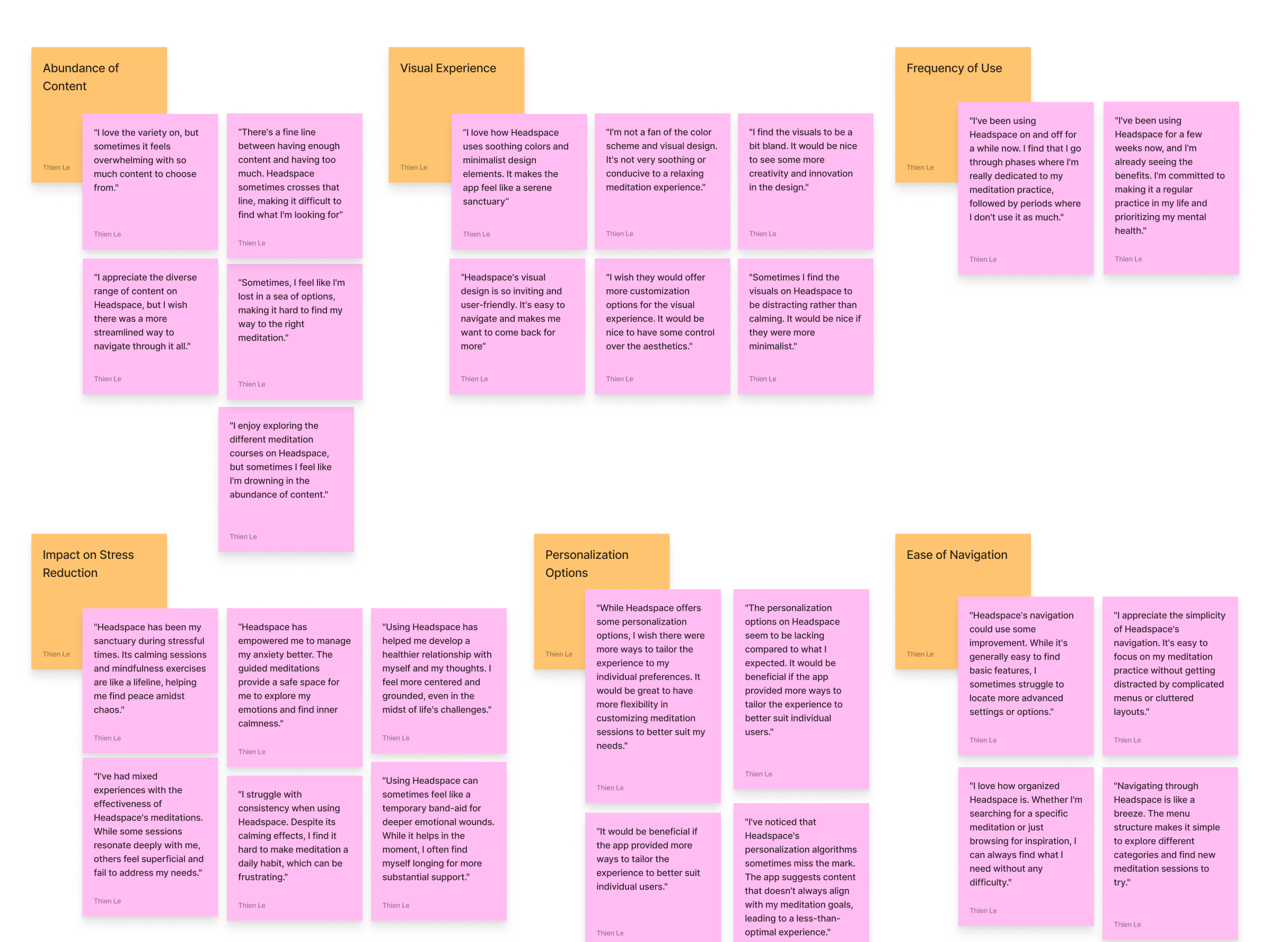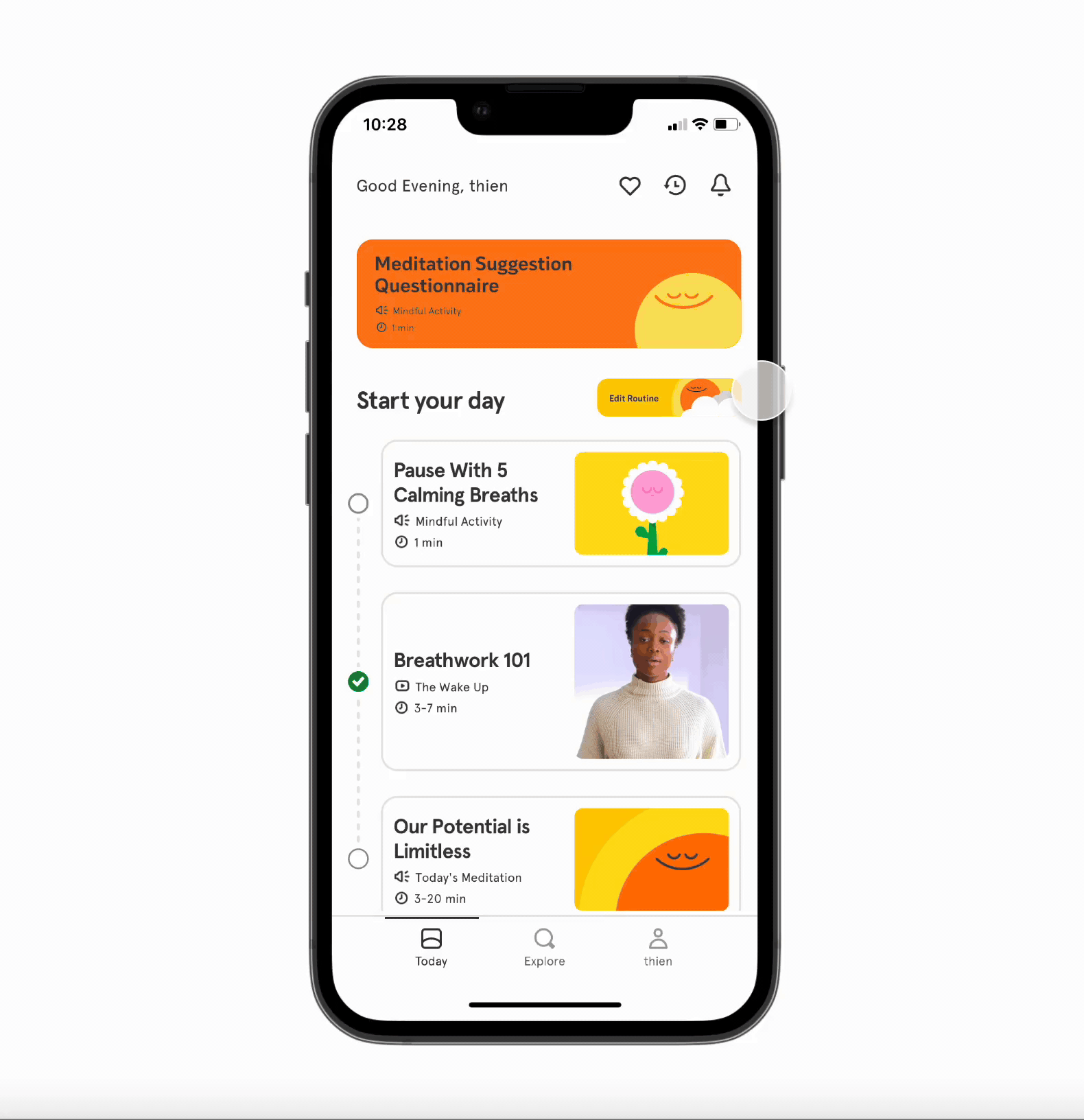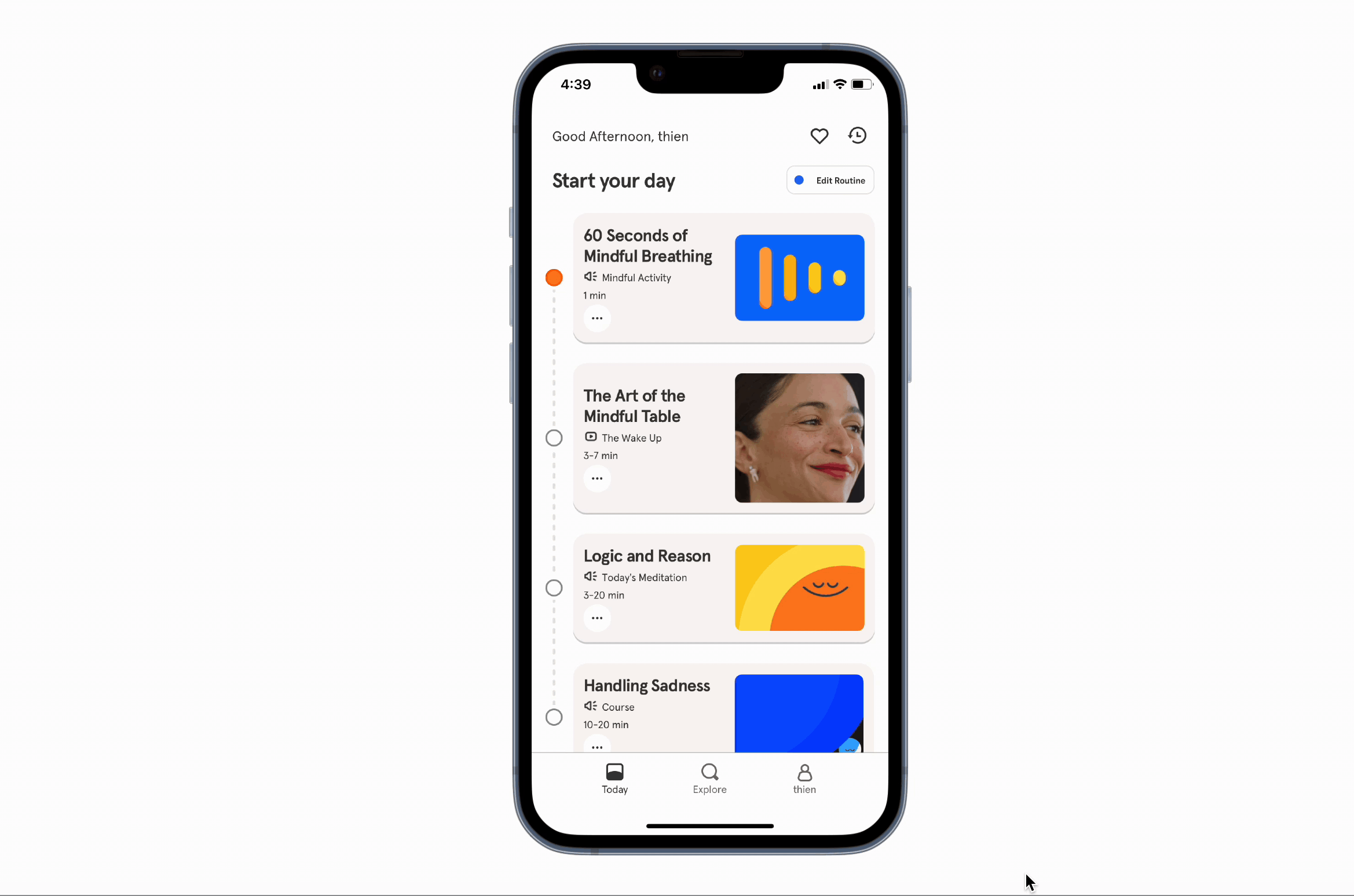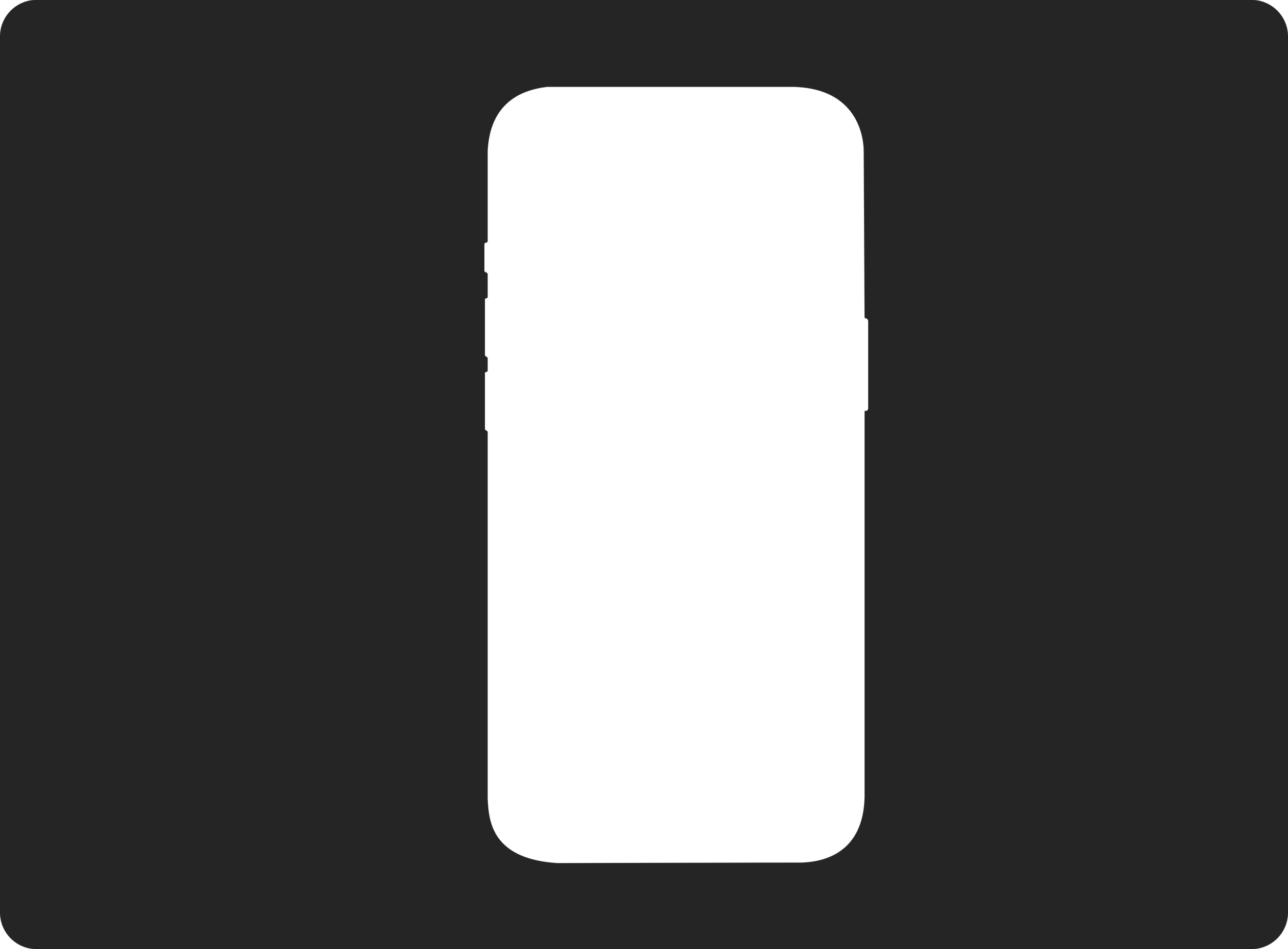Product features on Headspace to make the search for meditations more personalized for both routines and spur-of-the-moment scenarios.
ROLE
Product Designer, User Researcher
TIMELINE
8 weeks
SKILLS
Product Design, Interaction Design, User Testing, Design Systems
TEAM
Solo
Headspace is a mobile app that provides sessions of guided meditation to its registered users with the goal of mindfulness. I designed new features that focused on the search for meditations in the app with both a routine-making feature and conversational interface to create a personalized experience that aligns with Headpsace’s mission of helping people create life-changing habits and improve the health and happiness of the world.
SUMMARY
FINAL DESIGN
By democratizing access to mental health support, Headspace has contributed to a positive shift in how society addresses and intervenes in the crucial realm of mental health care.
HEADSPACE
With this mission in mind, my aim was to understand how to design within this problem space and increase the usage of this important design intervention for mental health.
Sunny.
IT’S GETTING BRIGHT IN HERE
Sunny is a conversational assistant that helps when users are overwhelmed by the number of meditations on the app. With Sunny, users can ask for the most personalized meditation exercises.
Routine Making.
GETTING IN THE GROOVE
Users can cater the content on their homepage to their own routine and have an easier way to access frequented meditations.
RESEARCH
How I tried to find a way to make mental healthcare accessible on a mobile device…
I first interviewed people with varying understandings of Headspace to learn about their needs, motivations, and frustrations with current methods of meditating.
Engaging in empathetic conversations and utilizing surveys, interviews, and usability tests, I uncovered both pain points and the unique aspirations driving users' connection to Headspace. This process delved beyond the what and explored the why to reveal emotional nuances shaping the interactions I was building.
Interview Insights.
😤
Users were overwhelmed and annoyed when prompted with meditations and videos that are not used on the home page.
Swamped on the home screen
😓
There was no sense of reflection after finishing a meditation or video. As soon as they finish, there was no transition period.
Abrupt transition
😵💫
For new users, it was difficult to choose a meditation because there are so many options to choose from.
Too many choices
My overall finding was that Headspace had an opportunity to create more personalized experiences within their product to cater to a wide range of audiences and scenarios for mental health care.
Affinity Mapping.
With each major insight on a sticky note, I grouped the insights by similarity and topic.
How can we create a personalized experience for Headspace users that aligns with their mission?
Feature Roadmap.
From the major frustrations that most interviewees expressed, I outlined three features that the first prototype can have.
Editing Routine Initial User Flow.
Thinking about how I wanted the user to interact with the app to accomplish adding a meditation to their routine.
EXPERIENCE GOALS
Editing Routine
Creating a simple way for users to create a customized routine would increase the usage of the app. The goal was to ensure that this process is intuitive and felt manageable for everyday use.
Reflection Form
The goal was to design a reflection form that seamlessly integrated into the post-meditation experience. The user should feel invited, not interrupted. By providing thoughtful questions, the aim is to encourage users to delve deeper into their thoughts and emotions, fostering a more profound understanding of their meditation experience.
Meditation Questionnaire
The questionnaire is crafted with care, presenting questions that delve into the user’s preferences, mood, and meditation goals. The design ensures that each question serves a specific purpose, allowing Headspace to tailor recommendations that align precisely with the user’s unique needs.
INITIAL PROTOTYPES
01: Meditation Routine
When opening Headspace, the home screen is the same for every user. It is not catered towards different users’ needs so by offering routines, users can cater their content and have an easier way to access frequented guided meditations.
02: Reflection Form
Currently, after a meditation ends, users are immediately brought onto a screen with more guided meditations. For a meditation app, that can be overwhelming after a calm session. Giving users the time and space to reflect on the meditation they just did will not only reduce overload, it will allow them to reflect and be present in the moment.
03: Meditation Suggestion Questionnaire
Allowing users to have a place to suggest guided meditations to them can be helpful because Headpsace has over 50 different types of guided meditations and videos so it can be overwhelming for users that know that they want to meditate but not exactly what they want to focus on.
USER TESTING
Learning Objectives
I sought to assess participants' seamless integration of the new meditation feature into their routines on Headspace, evaluating their understanding of its functionality, user-friendliness, effectiveness, and overall alignment with the app's user experience.
What is Success?
I evaluated success by assessing the frequency of user errors and gathering feedback on the ease of tasks. Additionally, I sought to understand the app's effectiveness in addressing user pain points, motivations, and goals.
How I Tested
During in-person usability tests, I tested the prototype with 5 different users who had varying knowledge of how to use Headspace and provided them with tasks to add a meditation to their routine, ask for a recommendation, and take the questionnaire.
Round 1 Testing Insights.
40% of users did not want to fill out the meditation questionnaire.
Average time of editing meditation routine was 1 min 32 sec.
80% of users did not interact with the reflection feature.
Defining what needs to change based on insights from users.
👍🏾
Make editing routine more seamless by allowing users to edit on the main homepage without separating each part of day.
😇
Eliminate the questionnaire in order to be recommended a mediation, and design a voice assistant that feels more human.
✨
Combine final reflection into conversational interface to provide a more cohesive experience.
Continuing to test, iterate, and prototype.
Prototyping in Figma
Compiling VoiceFlow Testing Insights
Prototyping + Testing Assistant in VoiceFlow
Animating in AfterEffects
DEVELOPMENT AND DESIGN CONSIDERATIONS
How did I go about making design decisions for new features based on research insights?
Designing new features for Headspace was a dynamic process, shaped by user feedback. Usability testing and user research sessions became integral in this process, guiding decisions that were rooted in real user experiences. The goal was to overall create features that resonated seamlessly with the Headspace values of mindfulness and well-being.
Interface 1: Editing Routine
Every animation and interaction was meticulously designed to align with the calming rhythm of the existing design system and to feel like a natural extension of the Headspace experience.
Interface 2: Adding Meditation to Routine
I incorporated visual cues that responded to the user's actions, confirming their decision in a way that felt both intuitive and gratifying. The result is a streamlined routine-building experience, offering users assurance that their mindfulness journey seamlessly unfolds in the serene realm of Headspace.
Interface 3: Conversation UI
The challenge with Sunny was to strike a balance between playfulness and functionality to provide users with personalized meditation suggestions that resonate with their unique needs.
Personalized Routines: Your Path to Mindfulness
Life can be hectic, but your mindfulness practice shouldn't be. Build routines that seamlessly integrate into your daily life. Choose from a variety of meditation durations and exercises, and let your mindfulness practice adapt to your schedule.
Sunny: Your Mindful Guide for Every Moment
Whether it's a busy morning, a midday slump, or winding down before bed, Sunny understands your unique needs and feelings. Simply chat with Sunny about how you're feeling, and get instant recommendations for meditation sessions that match your mood and time.
PROJECT TAKEAWAYS
Crafting new features means diving into the minds of the diverse user base of Headspace, understanding their needs, and designing with a genuine sense of empathy. I realized that while working on this, it's about more than just functionality, but creating an interface and experience that resonates on a personal and emotional level, enhancing the overall meditation and reflection experience.
At times, I faced the challenge of striking the right balance between creating visually appealing designs and meeting the diverse needs of our user base. Learning to overcome this roadblock involved active collaboration with users through usability testing and feedback sessions. By incorporating direct user input, I gained valuable insights into the aspects that resonated emotionally with them, ensuring that the design wasn't just aesthetically pleasing but also functionally impactful.
Wearing both the researcher and designer hats posed a unique challenge. To overcome this, I established a structured workflow, clearly defining distinct phases for research and design. This allowed me to immerse deeply in each role without compromising the integrity of either process. Additionally, I enlisted the support of peers for cross-validation, ensuring that my dual perspective enriched rather than hindered the overall design process. This collaborative approach not only streamlined the workflow but also reinforced the synergy between research insights and design decisions.






























